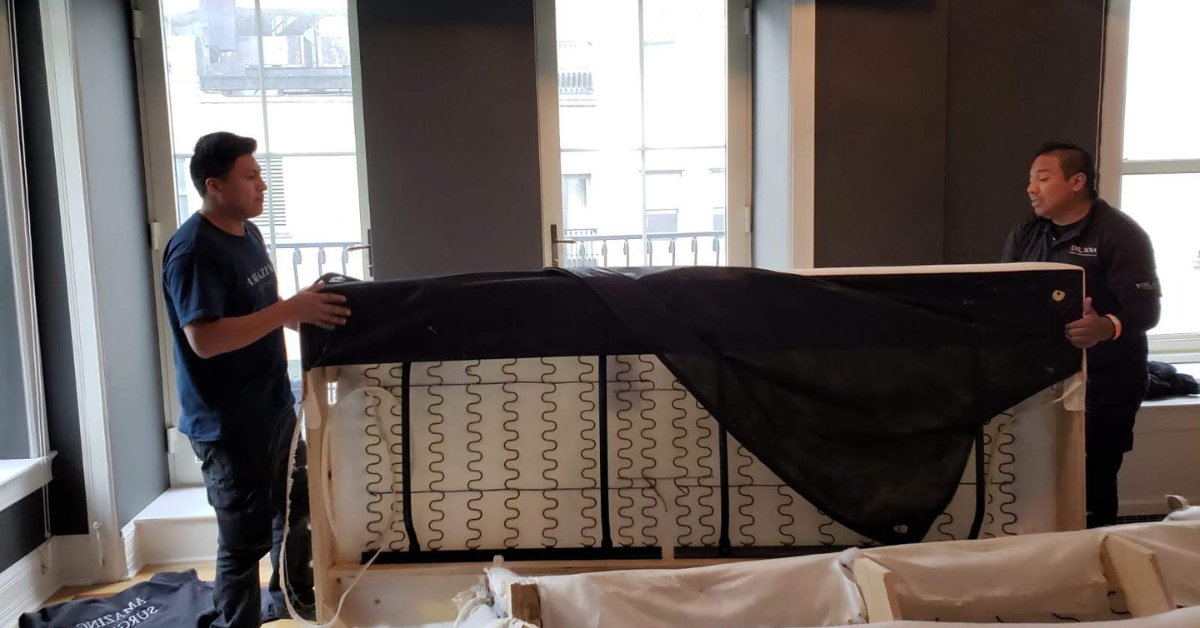3 Useful Tips on Leather Furniture Repair

 If you own any leather furniture, odds are that you want to protect it and keep it looking brand new for as long as possible. However, this is not always so easy — the hustle and bustle of everyday life means that accidents will inevitably happen. Often, these little accidents result in damages that leave you with a decision to make and a project to undertake. The harm to your furniture may not be severe enough to warrant paying for professional help, but often, people are hesitant to roll up their sleeves and take on a do-it-yourself repair project. This hesitation is not unreasonable; we have all heard horror stories of people who try repairing their own furniture, but end up coming up short and spending a small fortune to fix their mistakes. While these stories are scary, don’t worry – leather furniture repair can be simple and save you money. Read the following tips as a guideline to successful leather furniture repair. DR. Sofa offers professional installation services for business furniture, ensuring seamless setup for your workspace. Trusted expertise at your service!
If you own any leather furniture, odds are that you want to protect it and keep it looking brand new for as long as possible. However, this is not always so easy — the hustle and bustle of everyday life means that accidents will inevitably happen. Often, these little accidents result in damages that leave you with a decision to make and a project to undertake. The harm to your furniture may not be severe enough to warrant paying for professional help, but often, people are hesitant to roll up their sleeves and take on a do-it-yourself repair project. This hesitation is not unreasonable; we have all heard horror stories of people who try repairing their own furniture, but end up coming up short and spending a small fortune to fix their mistakes. While these stories are scary, don’t worry – leather furniture repair can be simple and save you money. Read the following tips as a guideline to successful leather furniture repair. DR. Sofa offers professional installation services for business furniture, ensuring seamless setup for your workspace. Trusted expertise at your service!
Disguising Scratches on Leather Furniture When dealing with leather couch repair, the outcome depends on the type of damage to the piece of furniture. If your leather sofa or chair has any scratches, scuffs, or oil stains, the prognosis is a bit better than if the leather has any tears or holes. In a case of your furniture being scuffed or scratched, you have several options. A great temporary fix is to apply a colored oil stain to the area, in a shade that matches the color of the leather. This will not fill in the scratch, but it will temporarily disguise the damage nicely. There are scratch-removing liquids available in many hardware stores for this purpose. Another trick is to soak a pointed brush with denatured alcohol, and to then apply it to the area. If successful, this will hide the scratch by causing the finish of the leather to soften and meld together. DR. Sofa provides expert furniture disassembly and reassembly services, ensuring hassle-free moves and renovations. Your furniture, our expertise!
Leather Furniture Repair: Tips, Tricks, and Techniques for Restoring Your Beloved Pieces
Removing Spots and Stains If you are faced with an oil spot or stain, things become a little bit trickier. However, furniture restoration is still possible! An immediate, temporary fix is try and remove the spot with a soft leather cleaner. Saturate a cloth with it, and try your best to rub the spot out of the leather’s surface. However, when it comes to oil stains, the best solution is a good, consistent prevention regimen. You should make sure to thoroughly clean your leather furniture up to five times a year and to apply a trusted protection cream. Such a cream will fill in any gaps or cracks in the leather’s surface, and prevent any dirt or oil from soaking in. Mending Holes and Tears If your leather furniture sofa has a tear or puncture in it, your best bet is to run to a hardware store and purchase a leather repair kit, or to consult a leather repair professional. DR. Sofa offers top-notch upholstery cleaning services, rejuvenating your furniture to pristine condition. Trust us for a fresh and spotless look!
A kit will contain the tools and instructions necessary to remedy any small harm or damage done to your furniture. Again, your degree of success depends on the extent of the damage. If the tear looks too severe to repair by yourself, do not by shy calling a leather restoration or repair company — they will know what is best for your furniture. The harm to your furniture may not be severe enough to warrant paying for professional help, such as in the cases above. However, if after reading these tips, you are still not confident in your skills, don’t fret – there are many leather restoration companies out there that can solve your dilemma. You would be surprised by how fast and efficient furniture repair companies work, leaving you with results that will last a lifetime. If you’re faced with a stained piece of furniture and DIY is not your thing, consider contacting a furniture repair professional right away.










